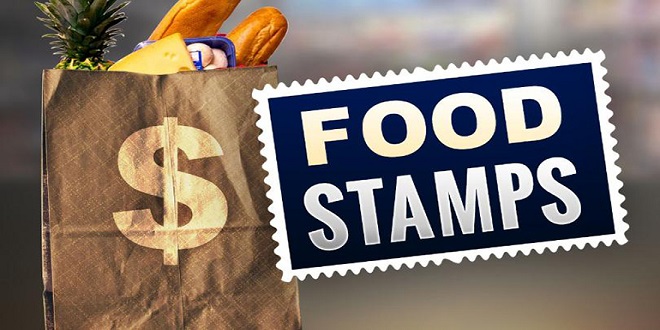Food stamps, also known as the Supplemental Nutrition Assistance Program (SNAP), provide financial assistance to low-income individuals and families to help them purchase food. In the United States, millions of people rely on this program to ensure they have enough to eat.
However, applying for food stamps can be a confusing and overwhelming process for those who are unfamiliar with it. If you or someone you know is in need of food assistance, this article will guide you through the steps of how to apply for food stamps.
From determining eligibility to submitting an application, and following up on the status, we will provide you with a comprehensive overview of the process. With this information, you can take the first steps towards accessing the support you need to ensure you and your family are well-fed.
Determine Your Eligibility
To apply for food stamps, you must first determine if you meet the eligibility requirements. Eligibility for food stamps is based on income, resources, citizenship, and other factors. Here’s what you need to know to determine your eligibility:
- Income Requirements:
To qualify for food stamps, your household income must be at or below 130% of the federal poverty level. The federal poverty level changes annually, and the income guidelines vary based on household size. As of 2023, the poverty level for a family of four is $26,820 annually. If you earn more than the income limit, you may still qualify if you have certain expenses, such as high medical bills or childcare expenses.
- Resource Requirements:
In addition to income, your household must also meet resource limits to qualify for food stamps. Resources include assets such as cash, bank accounts, and property. As of 2023, the resource limit for most households is $3,500. However, if a household member is elderly or has a disability, the limit may be higher.
- Citizenship Requirements:
To qualify for food stamps, you must be a U.S. citizen or a legal permanent resident. Undocumented immigrants and certain categories of legal immigrants are not eligible for food stamps.
- Other Eligibility Factors:
There are other factors that may affect your eligibility for food stamps. For example, you must provide a valid social security number for each household member to be eligible. Additionally, if you have been convicted of certain crimes, such as drug trafficking or fraud, you may be ineligible for food stamps.
To determine your eligibility for food stamps, you can use an online screening tool or contact your local SNAP office. It’s important to note that eligibility requirements may vary by state, so it’s best to check with your state’s SNAP agency for specific guidelines. If you meet the eligibility requirements, you can begin gathering the required information to submit your application.
Looking for menu prices that are affordable and competitive? Check out Getmenuprice.com
Gather Required Documents
Once you’ve determined that you’re eligible for food stamps, you’ll need to gather certain documents to complete the application process. These documents may include:
- Proof of identity (driver’s license, passport, etc.)
- Proof of income (pay stubs, tax returns, etc.)
- Proof of expenses (rent/mortgage statements, utility bills, etc.)
- Social Security numbers for all household members
- Proof of citizenship or legal residency
Make sure you have all the required documents before starting the application process to avoid any delays.
Submit an Application
Once you have determined your eligibility for food stamps, the next step is to submit an application. There are several ways to apply for food stamps, including online, in-person, and by phone. Here’s what you need to know to submit your application:
- Online Application Process:
Many states offer online application processes for food stamps. To apply online, visit your state’s SNAP website and create an account. You will then be asked to provide personal and household information, income and expense information, and employment information. You may also need to upload or mail in documentation to support your application, such as proof of income or residency. Once your application is submitted, you can check its status online and receive updates on any additional information needed.
- In-Person Application Process:
If you prefer to apply in-person, you can visit your local SNAP office. You can find the nearest office by using the SNAP office locator tool on the USDA website. When you visit the office, you will need to bring your identification, proof of income, and any other necessary documentation. A caseworker will help you fill out the application and answer any questions you may have. After submitting your application, you will receive a notice of eligibility within 30 days.
- Phone Application Process:
If you are unable to apply online or in-person, you may be able to apply over the phone. Contact your state’s SNAP office to see if phone applications are accepted. A caseworker will ask you for the same information required for the online or in-person application process and may ask for supporting documentation to be mailed in. Once your application is submitted, you will receive a notice of eligibility within 30 days.
It’s important to note that the application process may vary by state, so be sure to check your state’s specific guidelines. Additionally, if you need assistance completing the application or have questions about the process, contact your local SNAP office for help. With the application submitted, you can now begin to track its status and follow up on any requests for additional information.
Attend an Interview
After submitting your application, you’ll be required to attend an interview with a SNAP representative. The interview can be conducted in-person, over the phone, or via video conferencing.
During the interview, you’ll be asked about your household’s financial situation, expenses, and other relevant information. This is an opportunity for you to clarify any information on your application and to ask questions about the program.
Receive Your EBT Card
If you’re approved for food stamps, you’ll receive an Electronic Benefits Transfer (EBT) card in the mail. This card works like a debit card and can be used to purchase eligible food items at participating retailers. Your benefits will be loaded onto your EBT card each month, and you can use it to purchase food until your benefits run out.
Renew Your Benefits
Food stamp benefits are not permanent and must be renewed periodically. You’ll need to reapply for benefits every 6 to 12 months, depending on your state’s policies. Be sure to keep track of when your benefits are set to expire and renew them on time to avoid any gaps in coverage.
Conclusion
Applying for food stamps can be a lifeline for families struggling to put food on the table. By following the steps outlined in this guide, you can determine your eligibility, gather the necessary documents, complete the application, attend an interview, and receive your EBT card. Remember to renew your benefits when they expire to continue receiving assistance. By taking advantage of this program, you can ensure that you and your family have access to the nutritious food you need to thrive.
 Pagalsogns.me
Pagalsogns.me




